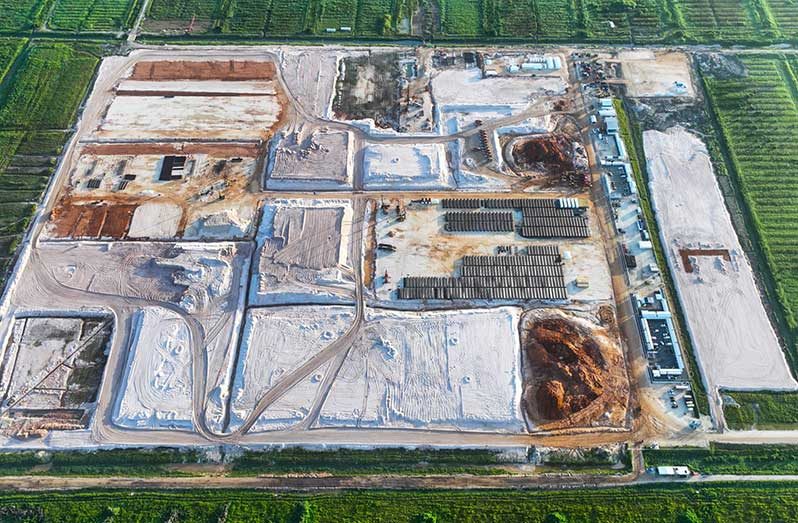THE Gas-to-Energy project in Guyana is moving full steam ahead, with soil remediation currently in progress for the 300MW combined cycle power plant, a critical component of the initiative.
This update was announced by LINDSAYCA, the US-based integrated energy solutions group, in a LinkedIn post on Monday.
“Updates from the Gas-to-Energy Project Soil remediation is in progress for Guyana’s 300MW combined cycle power plant. A future of sustainable and efficient energy is on the horizon,” LINDSAYCA said.
Soil remediation, a critical process in the early stages of construction, involves the treatment and restoration of contaminated soil to ensure it is safe for the building and operation of a power plant.
This step is essential to preparing the site for the construction of the plant, which will play a pivotal role in Guyana’s energy transition.
The remediation process typically includes removing pollutants or contaminants from the soil, which could otherwise pose risks to the environment, or compromise the structural integrity of the plant.
The Gas-to-Energy project, spearheaded by the Government of Guyana in collaboration with ExxonMobil and its Stabroek Block co-venture partners, CNOOC and Hess, is set to revolutionise the nation’s energy landscape.
The project comprises several key components: The construction of a 200-kilometre, 12-inch diameter pipeline, the development of the power plant and Natural Gas Liquids (NGL) facility, the establishment of a transmission main, the creation of a national control centre, and the upgrade of the transmission and distribution system.

The pipeline, designed to channel natural gas from ExxonMobil’s Liza Phase One and Liza Phase Two Floating, Production, Storage, and Offloading (FPSO) vessels, will be landed on the West Coast Demerara (WCD) shore before continuing approximately 25 km to the NGL and power-plant facilities in Wales, West Bank Demerara (WBD).
This infrastructure is expected to play a pivotal role in lowering energy costs by at least 50%, through an energy mix that includes gas, solar, wind, and hydropower.
The estimated total cost of the gas-to-energy project stands at US$1.8 billion, with the power plant and NGL facilities being funded by the government.
Notably, the conversion of natural gas from offshore operations to electricity is a cornerstone of the People’s Progressive Party/Civic (PPP/C) government’s commitment to energy sustainability, and reduced costs for consumers.
In July 2024, the government signed a US$8.6 million contract with Power China Caribbean for the establishment of a national control centre, a critical element of the project.
The completion of the centre, anticipated to be within 384 days, will house equipment for the Supervisory Control and Data Acquisition/Energy Management Systems/Generation Management System (SCADA/EMS/GMS).
Set to be operational by the end of October 2024, the gas-to-energy project has a 25-year lifespan, and is poised to significantly reduce electricity rates for Guyanese consumers by mid-2025.
Consultant for the Ministry of Natural Resources, Winston Brassington recently highlighted that this initiative is poised to transform the energy landscape in Guyana, offering a sustainable and cost-effective alternative to the current energy mix.
The project, with a price tag of just under US$2 billion, aims to complete the necessary transmission lines and substations by the end of the year, ensuring a seamless distribution network along the Demerara Berbice Interconnected System (DBIS).
By providing a more reliable and cost-effective energy source, the initiative could drastically reduce the frequency and duration of power outages, while also cutting the cost of electricity from the current US$0.25/0.36 per kWh to an affordable US$0.06/0.07 per kWh.
Such improvements would not only enhance the quality of life for Guyanese, but also foster a more conducive environment for business and industry growth.
“The pipeline and the transmission work will be completed this year, resulting in the 50 per cent reduction in GPL rates, which we project to happen by mid-next year,” Brassington said, highlighting the project’s potential to alleviate one of the region’s highest energy costs.
The GTE project not only promises to significantly reduce energy costs, but also to meet the growing demand for electricity in Guyana, which is projected to reach almost 1,000 megawatts by 2030.



.jpg)








